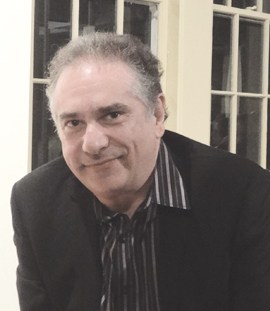On June 18, the Most Reverend Nicholas DiMarzio, Bishop of Brooklyn, accepted the Cause for Canonization of Monsignor Bernard John Quinn. Msgr. Quinn, a champion for racial equality, established the first church for African American Catholics – St. Peter Claver Roman Catholic Church – in Bedford Stuyvesant in 1922.
In 1928, Msgr. Quinn established the first orphanage for African American children in Wading River on Long Island. Despite the building being burned to the ground twice, he rebuilt it a third time; this time fireproofing it by using concrete and brick. The building, known at the time as the Little Flower Orphanage, remains the operations base for Little Flower Children and Family Services of New York. Msgr. Quinn died in 1940 at the age of 52, and was buried at the church he founded, where 8,000 people attended his funeral.
“Our investigation took almost ten years to put together and now we can send the documentation we have on the life of Monsignor Quinn to Rome,” said Bishop DiMarzio. “He combatted racism and is an inspiration to the priests of this diocese. He is a hero who turned things around and gave his life for his people, died an early death, and was a great man.”
As described in The Tablet, Bishop DiMarzio said he prayed to Msgr. Quinn when he had quadruple open-heart surgery in 2010, attesting that he felt the monsignor’s presence while waiting in the emergency room.

Mary Clare Quinn, a great-niece who attended the June service, said her family was very proud of the work Msgr. Quinn had done at Little Flower, and that they helped him there during the winters and summers.
“They used to burn crosses at our house in Mineola, even after he was gone, but my family stared fear down,” she said.
Msgr. Paul Jervis – who published a book in 2005 entitled Quintessential Priest: The Life of Father Bernard J. Quinn, and who is the Postulator for the Cause – said, “Monsignor Quinn could not separate his sacramental ministry from the social and political realities that denied to people on account of their race, or immigrant status, the opportunities to enjoy the fullness of life as the Lord willed for all humanity.”
“St. Peter Claver Catholic Church became a meeting ground where white Catholics encountered blacks and discovered that they all had a common humanity with the same human problems, and were all in need of the intercession of St. Therese and the pastoral intercession of Monsignor Quinn,” he concluded.
Since the Cause for Canonization has been accepted, Msgr. Quinn can be referred to as a “Servant of God.” The next steps in the process would be the title of “Venerable” (if nine theologians determine there’s enough cause to pass it to the entire Congregation), beatification and canonization.
Top photo courtesy of the Diocese of Brooklyn
Author
-

George Fiala has worked in radio, newspapers and direct marketing his whole life, except for when he was a vendor at Shea Stadium, pizza and cheesesteak maker in Lancaster, PA, and an occasional comic book dealer. He studied English and drinking in college, international relations at the New School, and in his spare time plays drums and fixes pinball machines.
View all posts
George Fiala has worked in radio, newspapers and direct marketing his whole life, except for when he was a vendor at Shea Stadium, pizza and cheesesteak maker in Lancaster, PA, and an occasional comic book dealer. He studied English and drinking in college, international relations at the New School, and in his spare time plays drums and fixes pinball machines.










